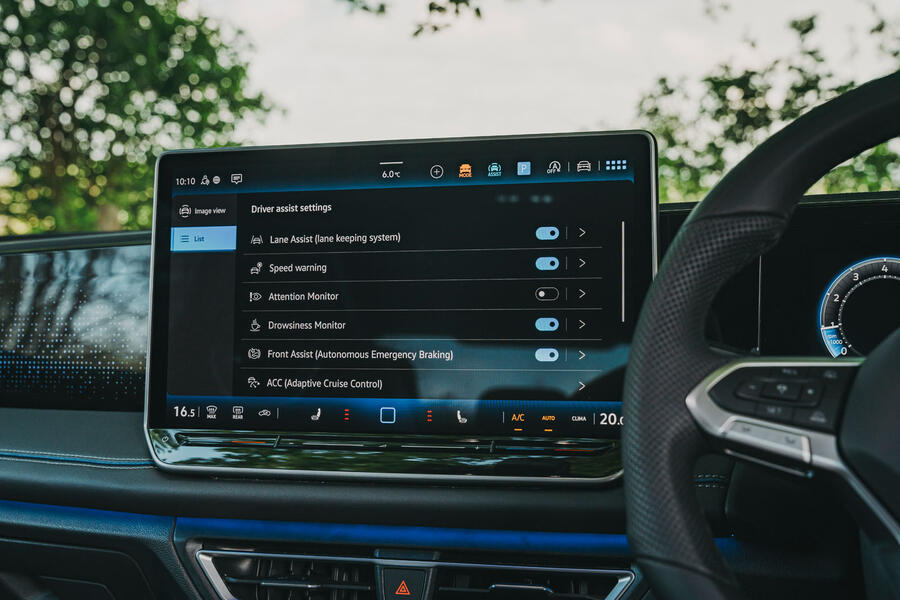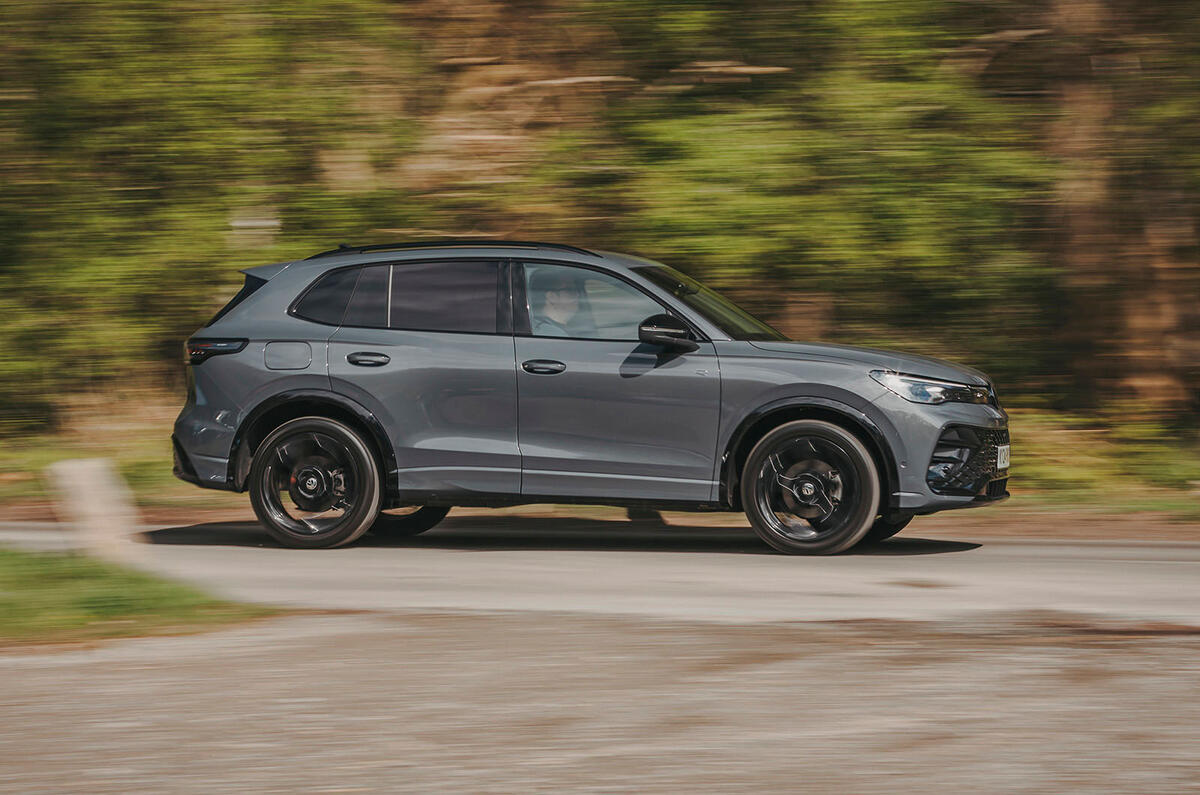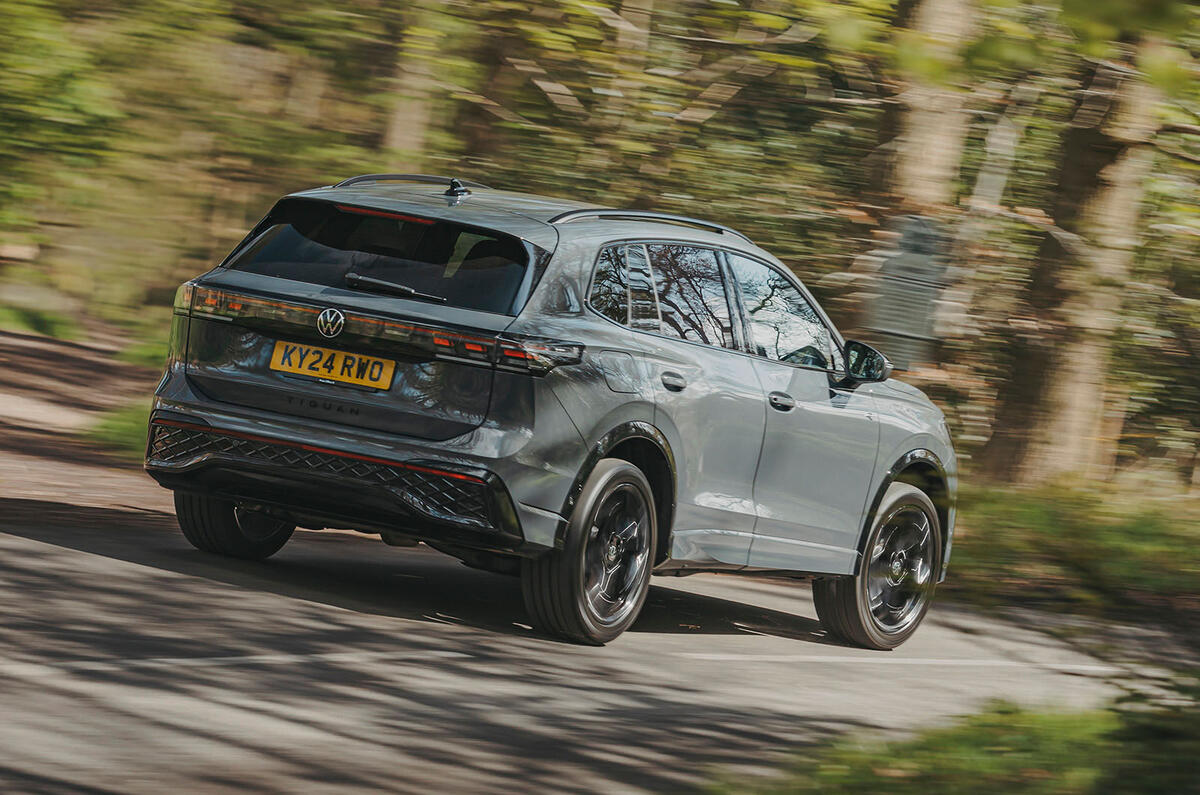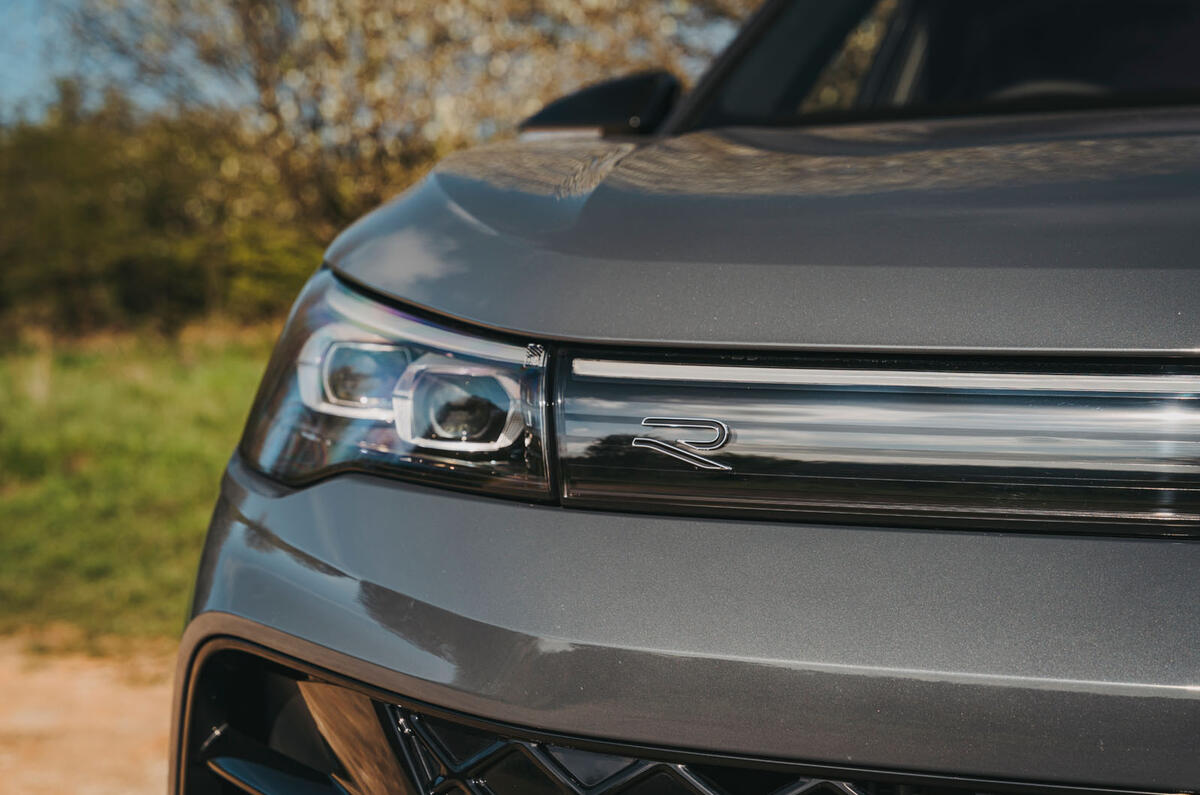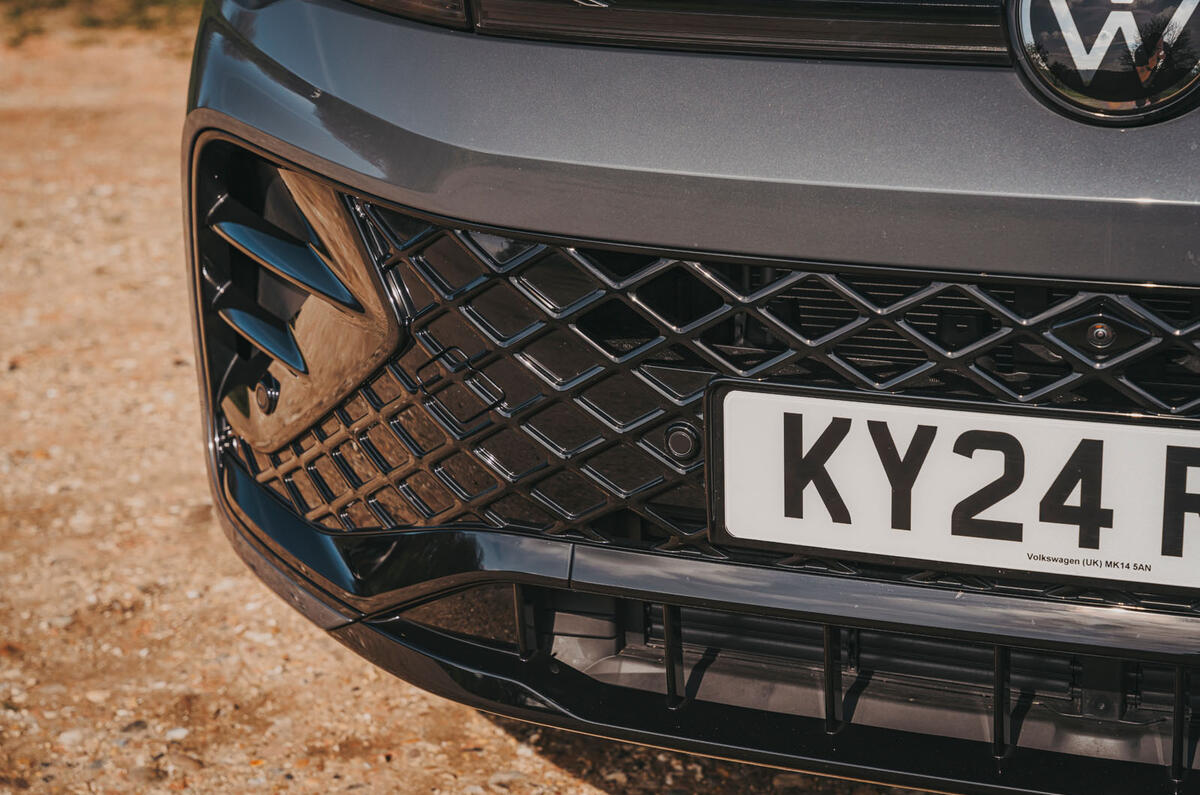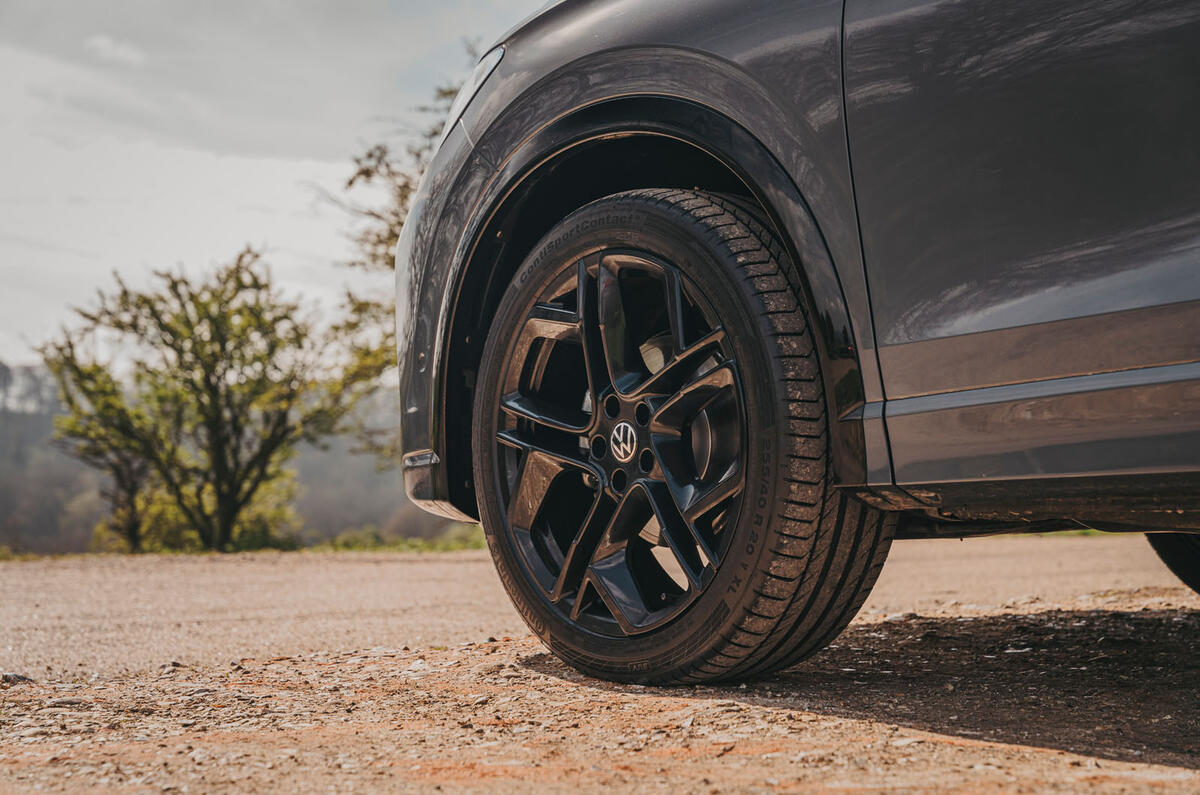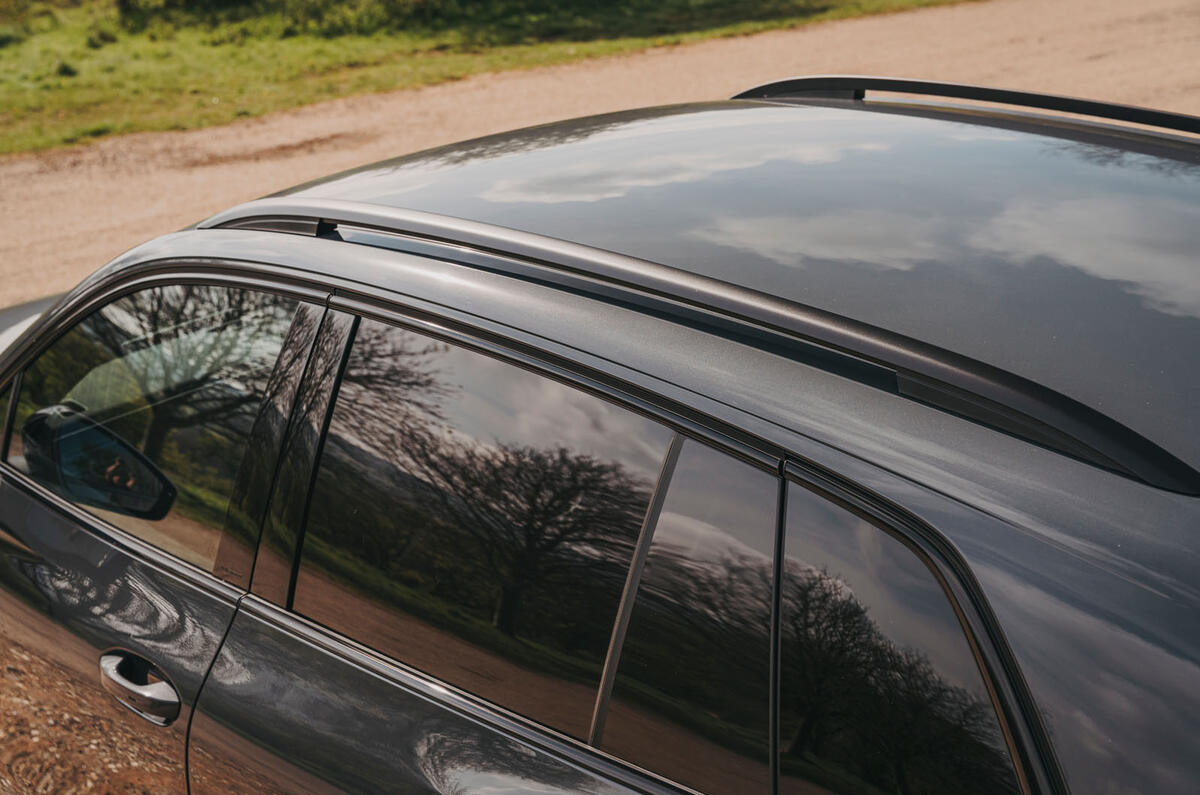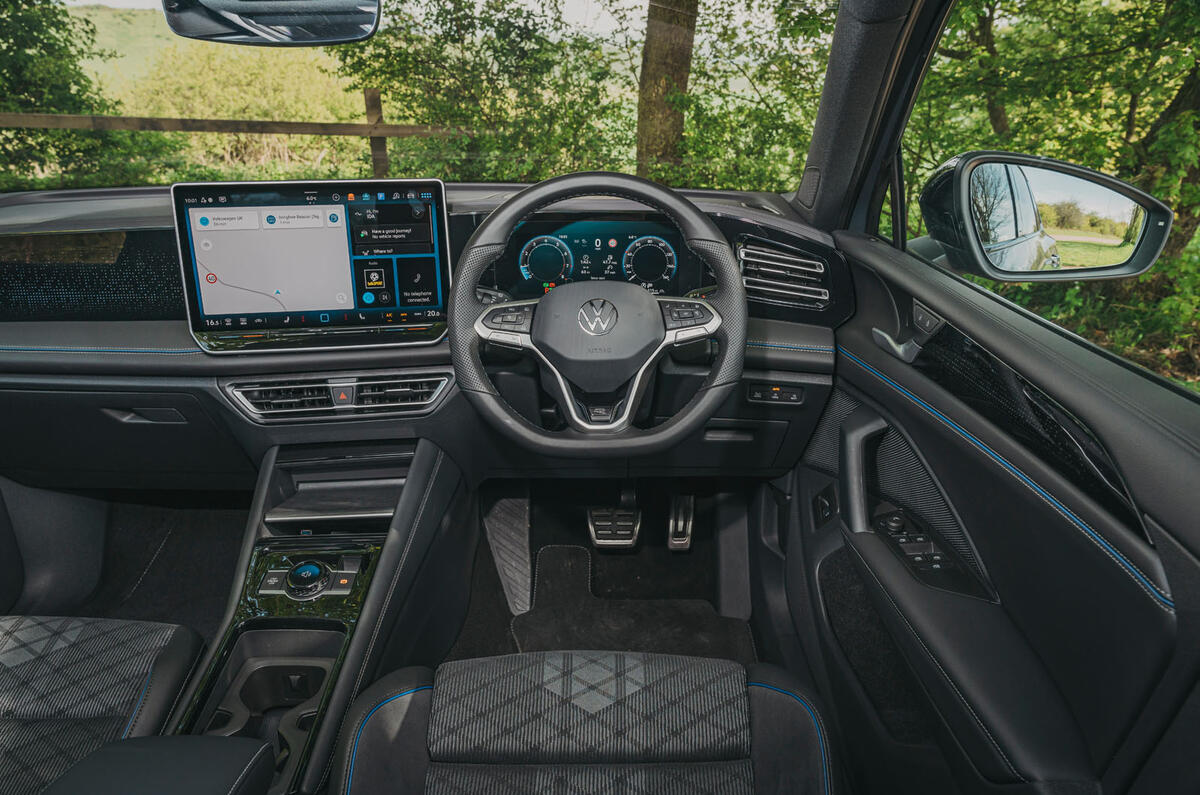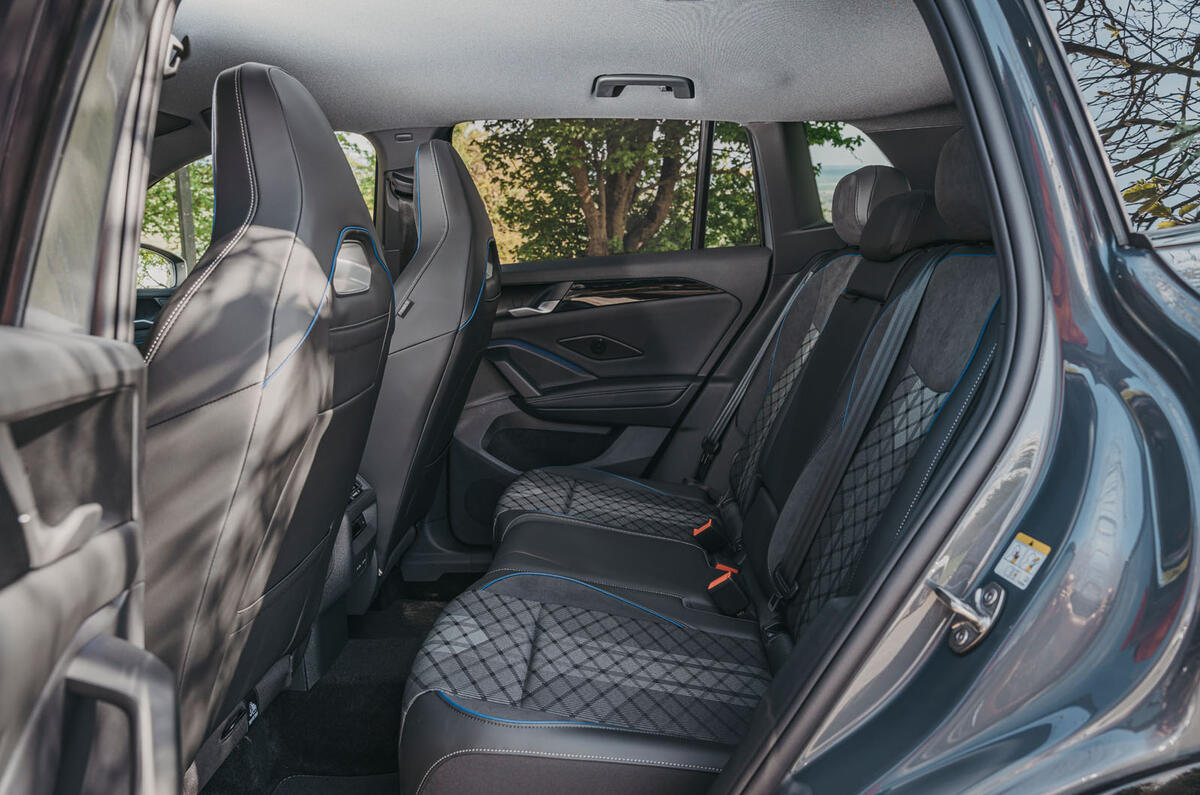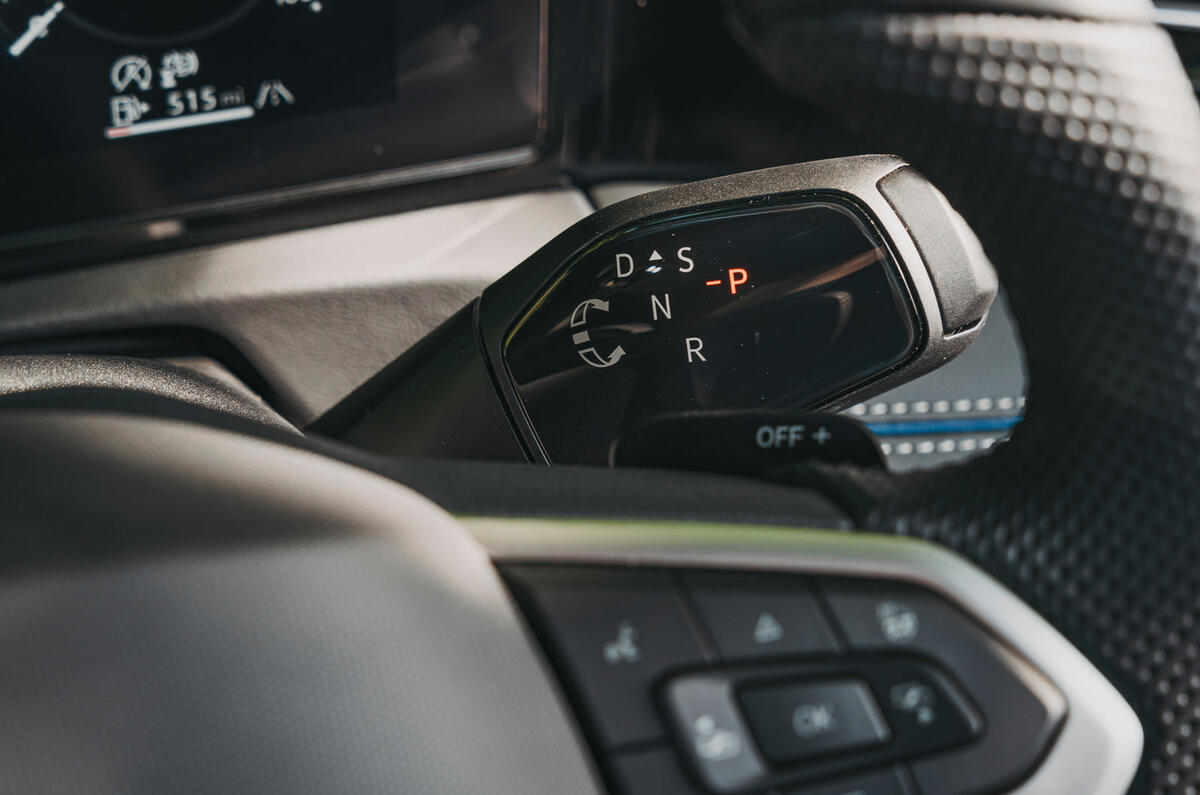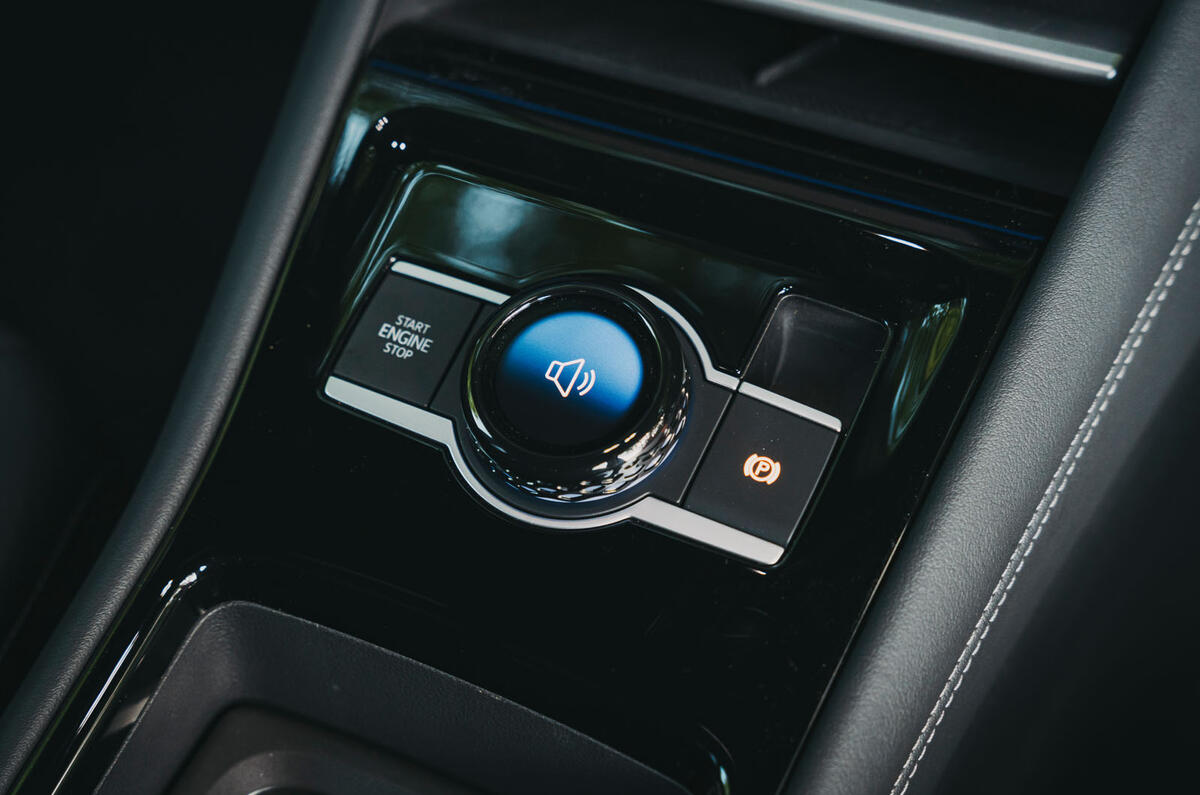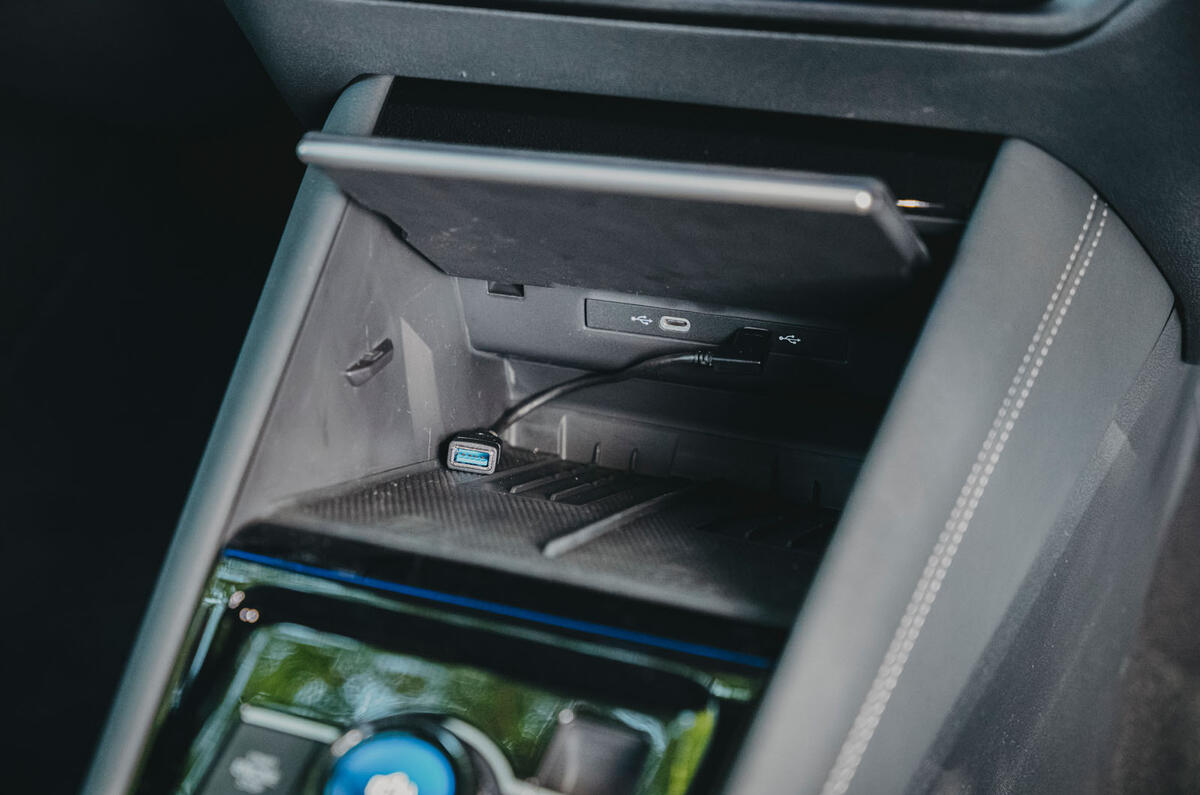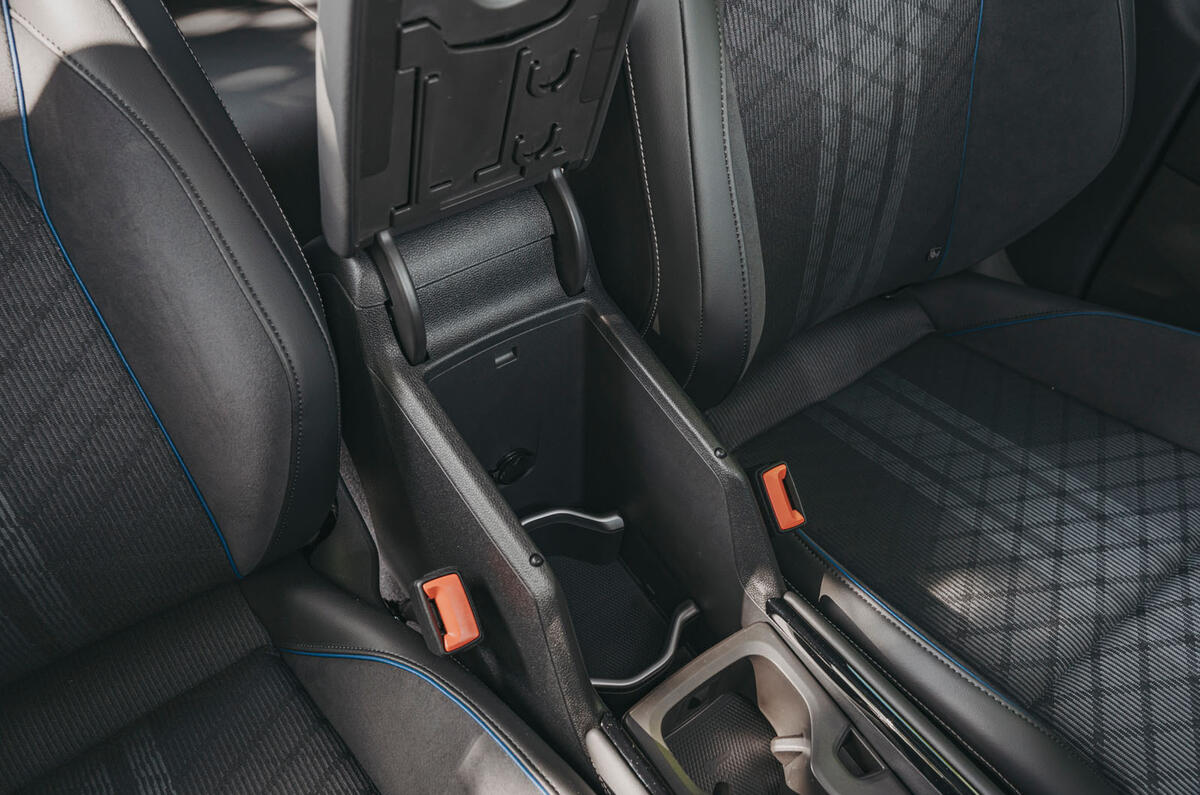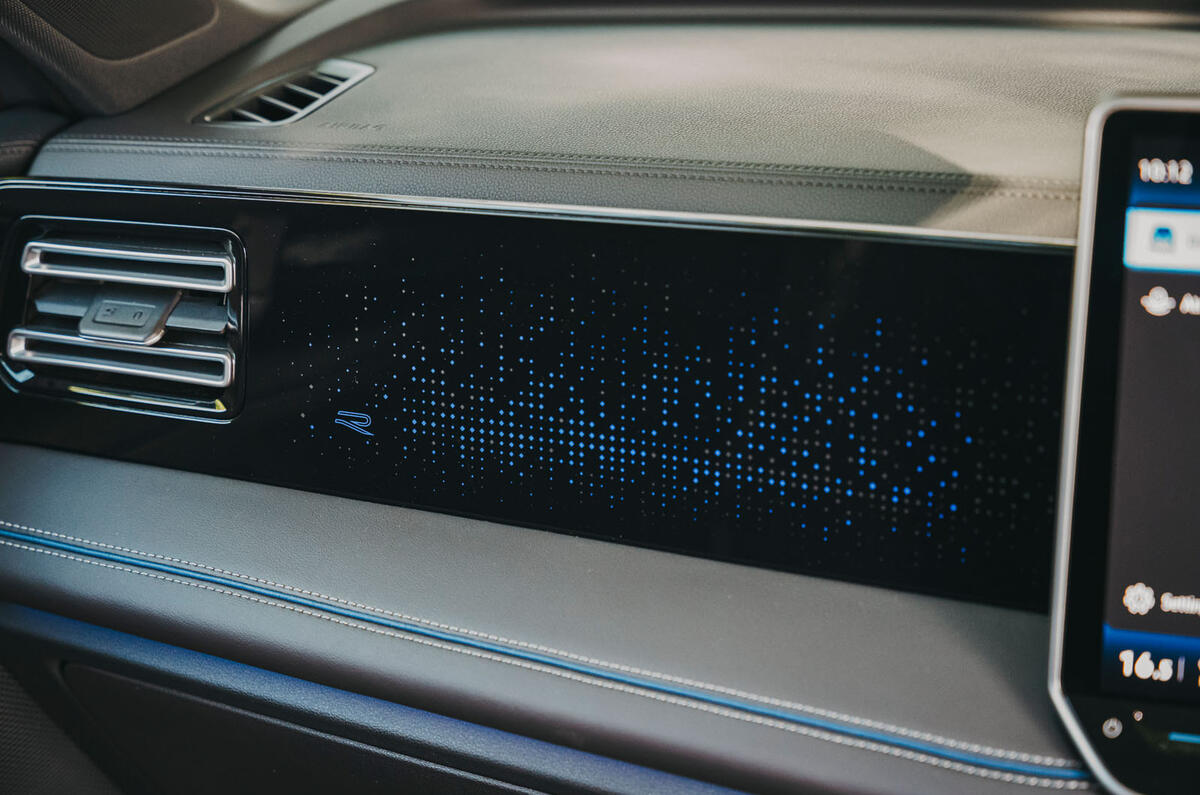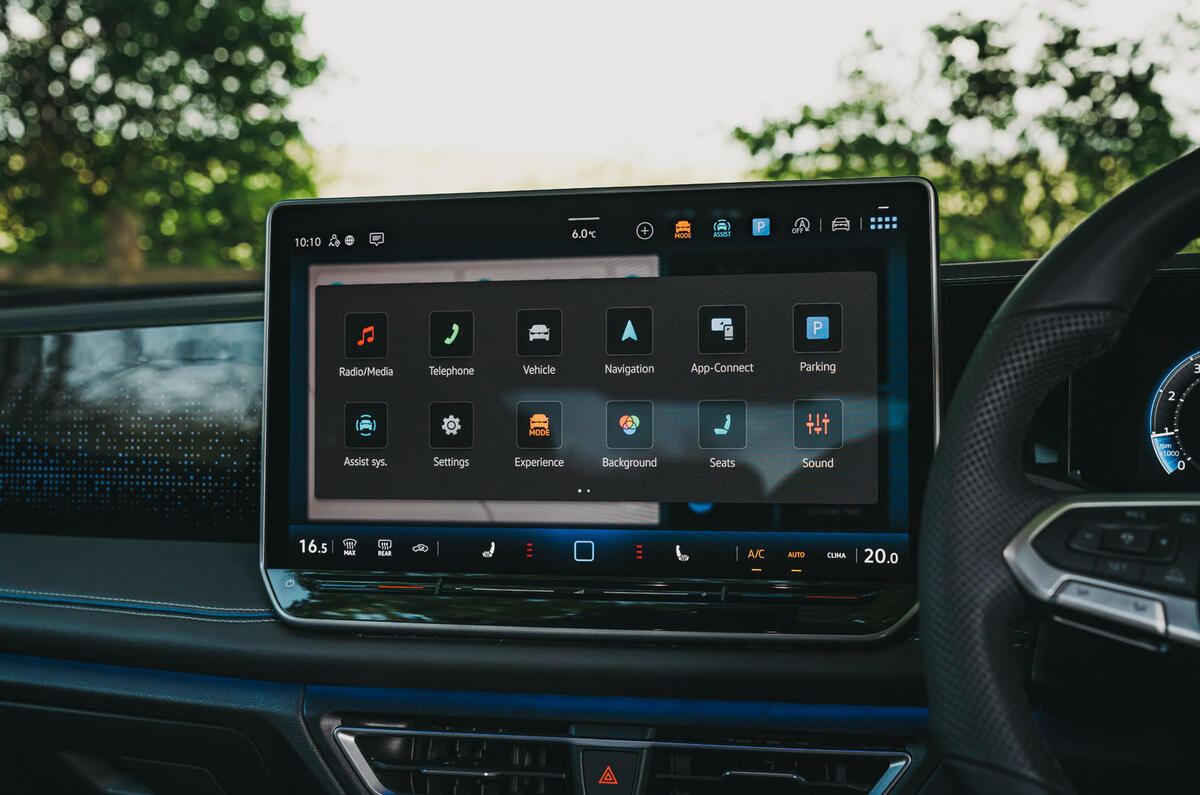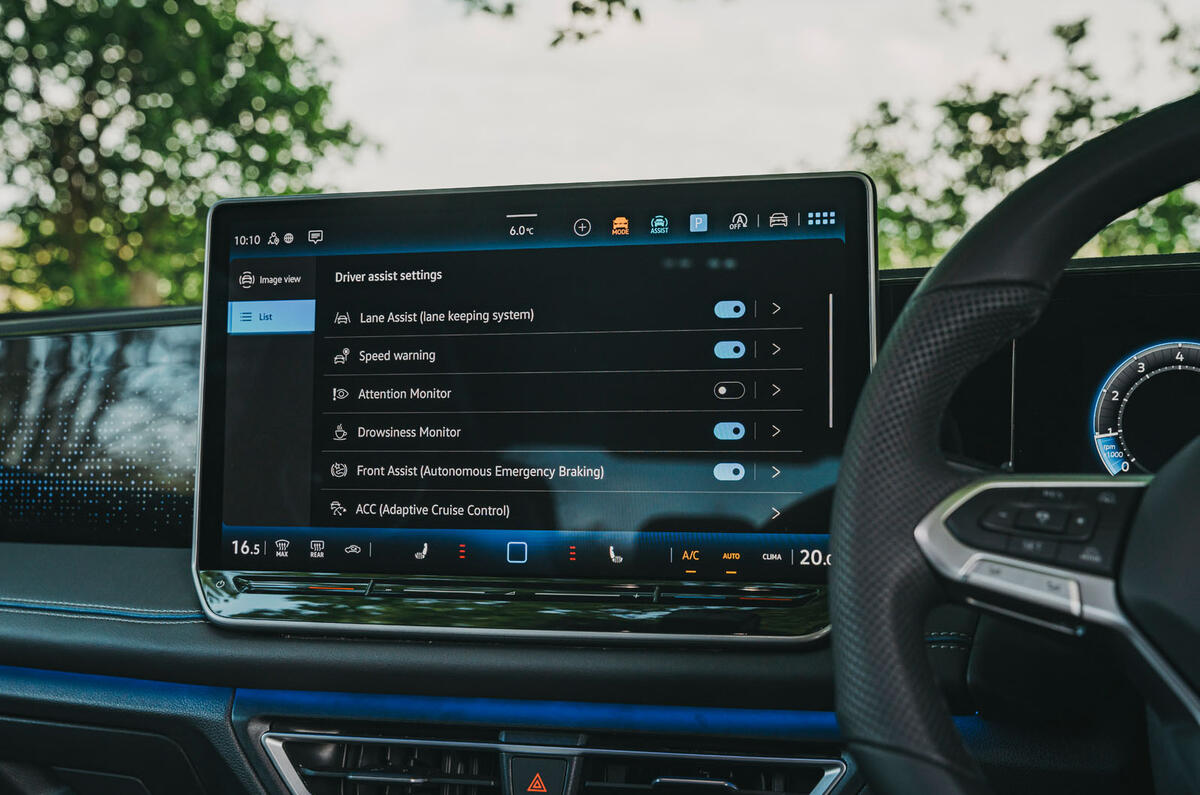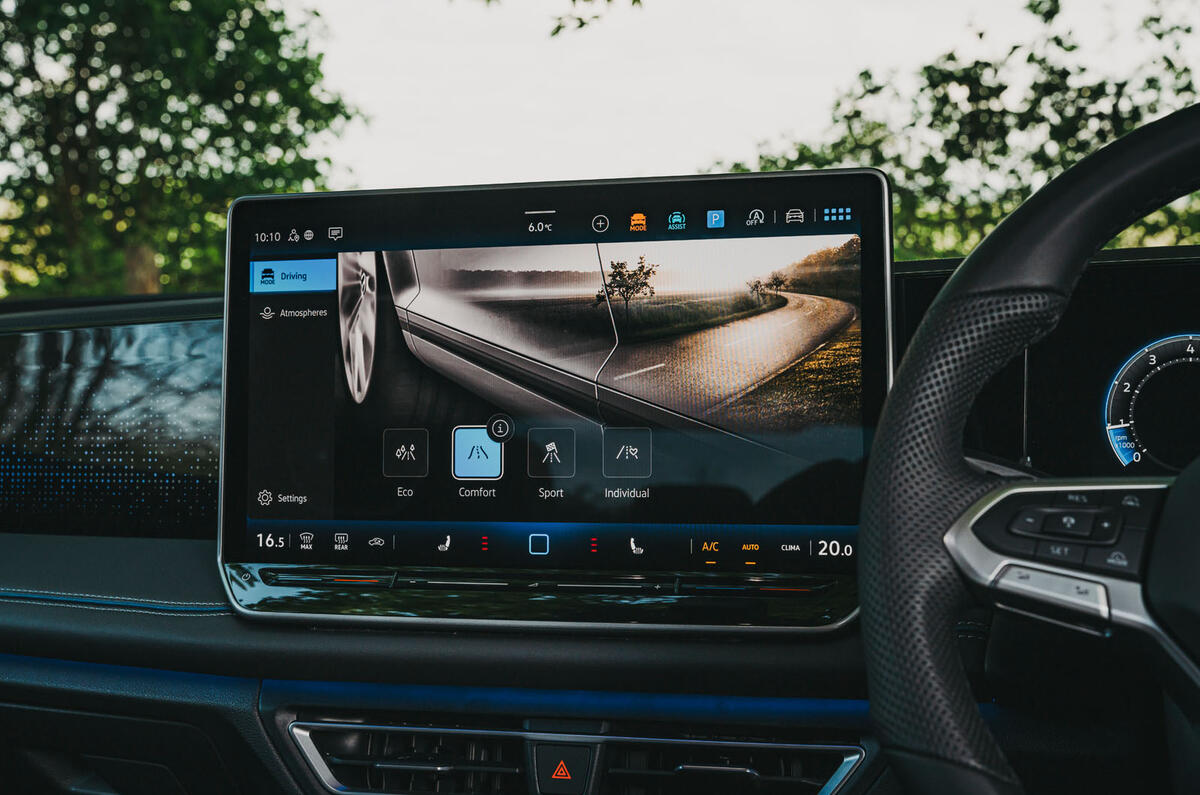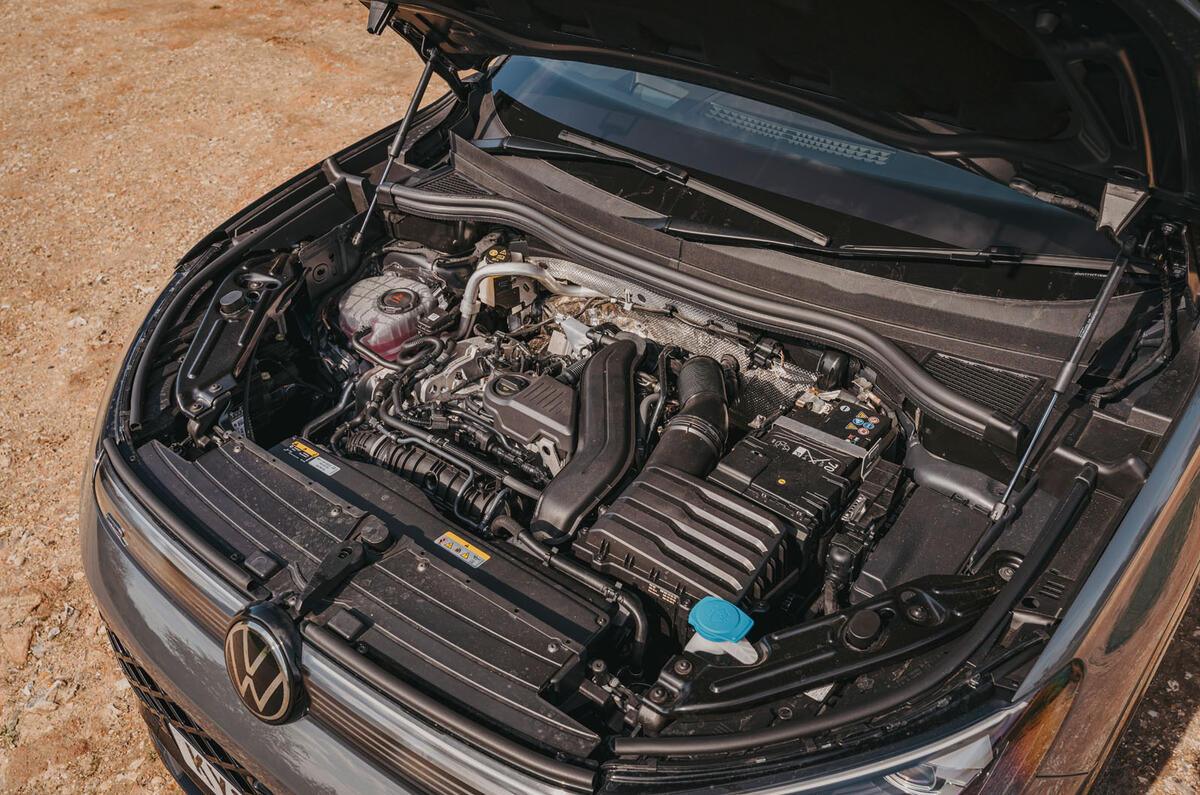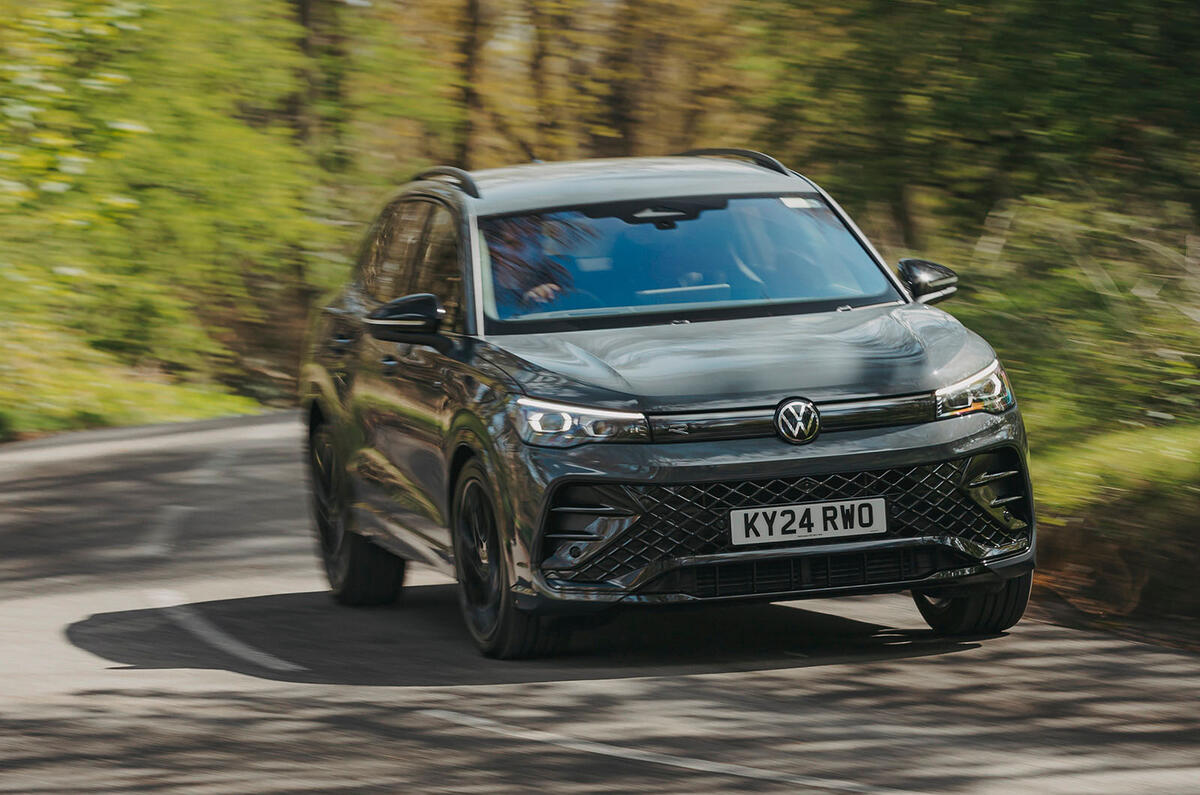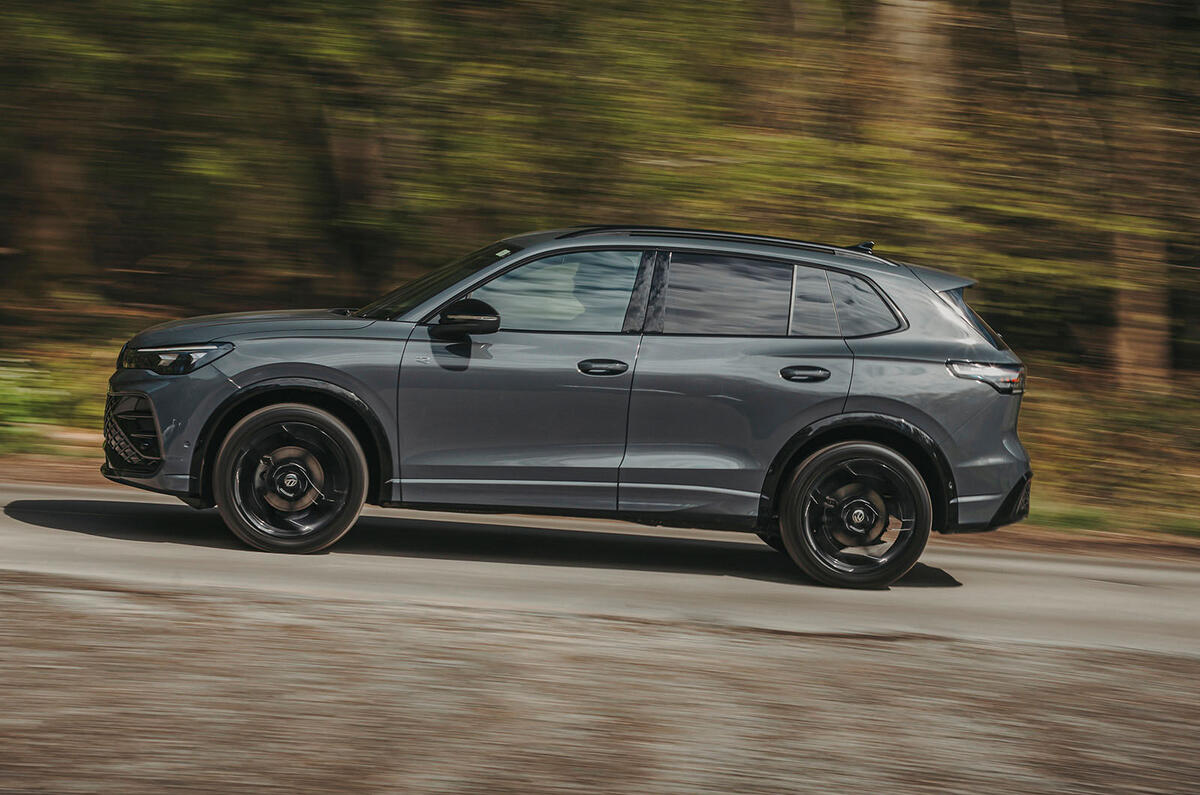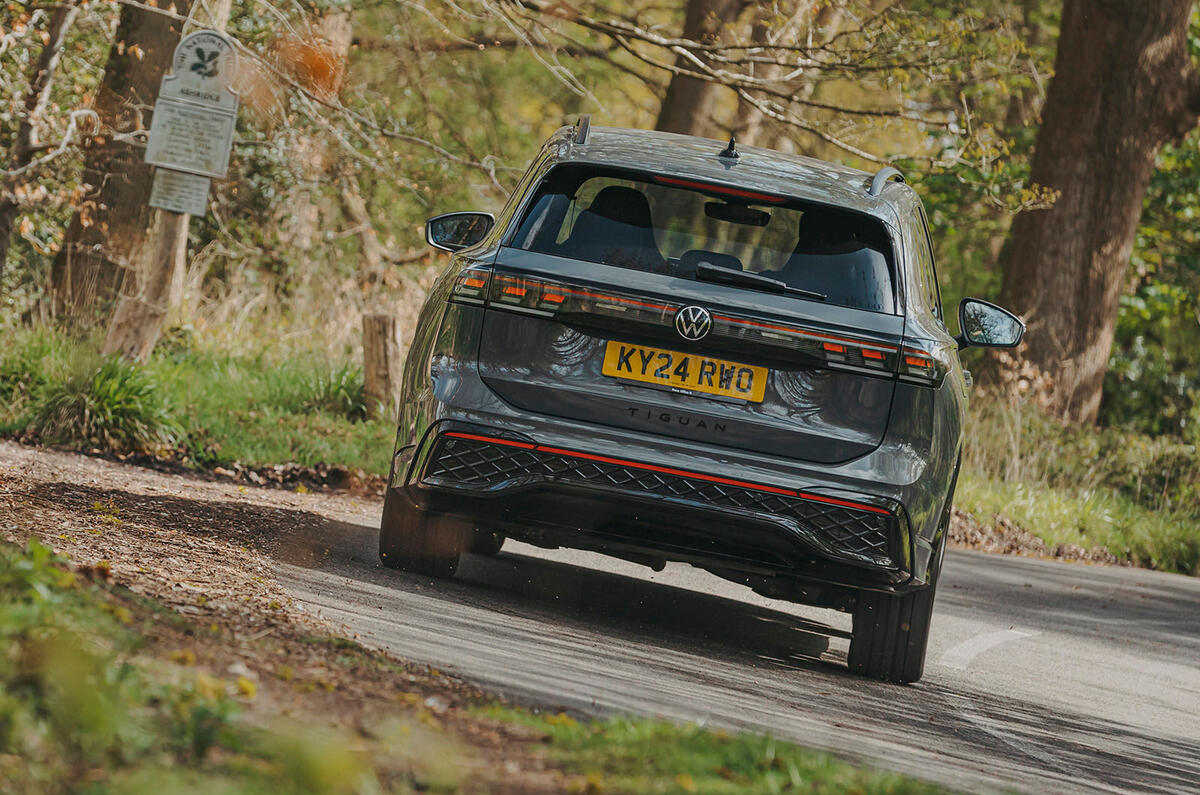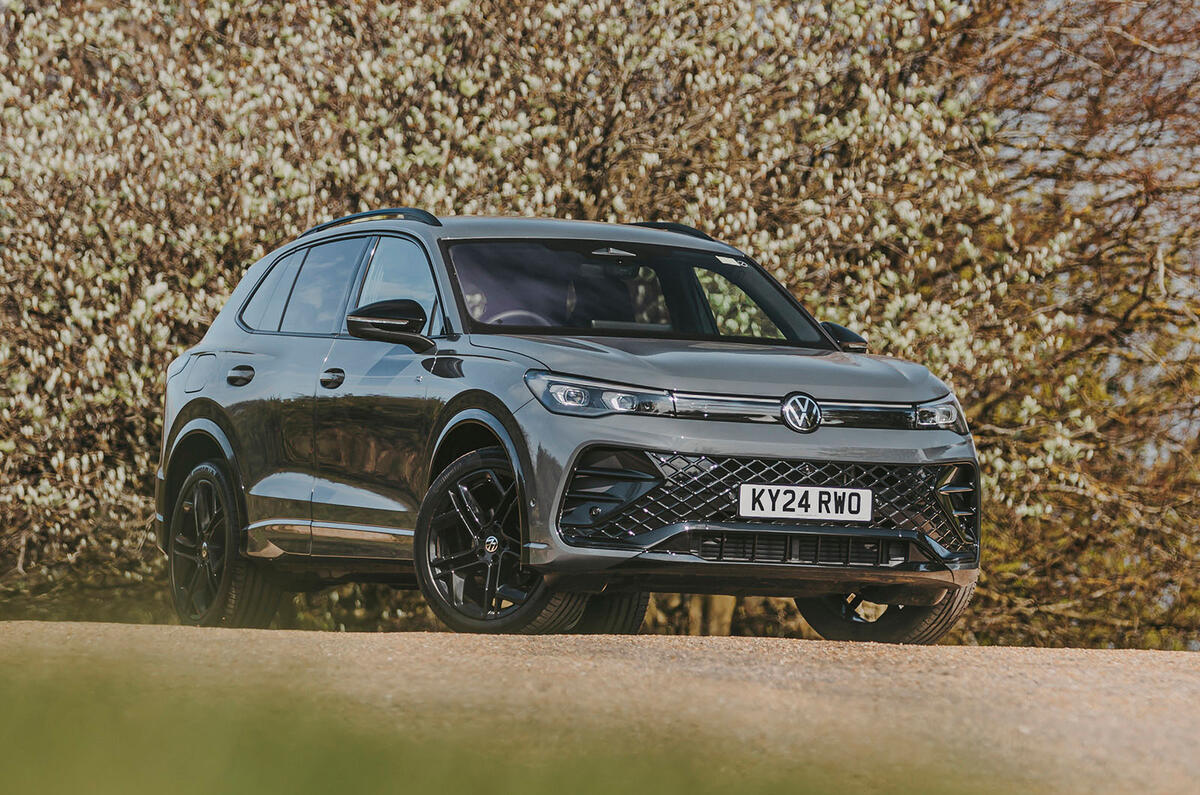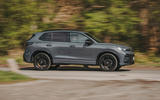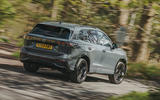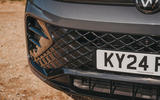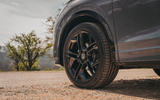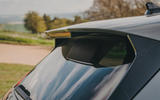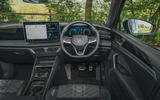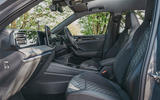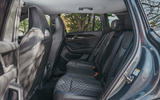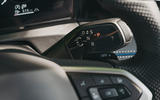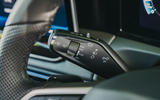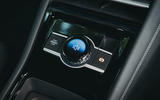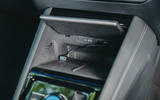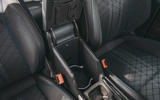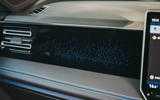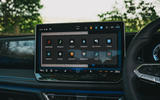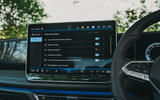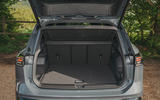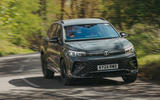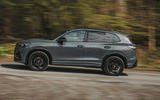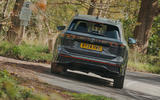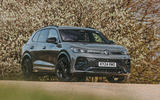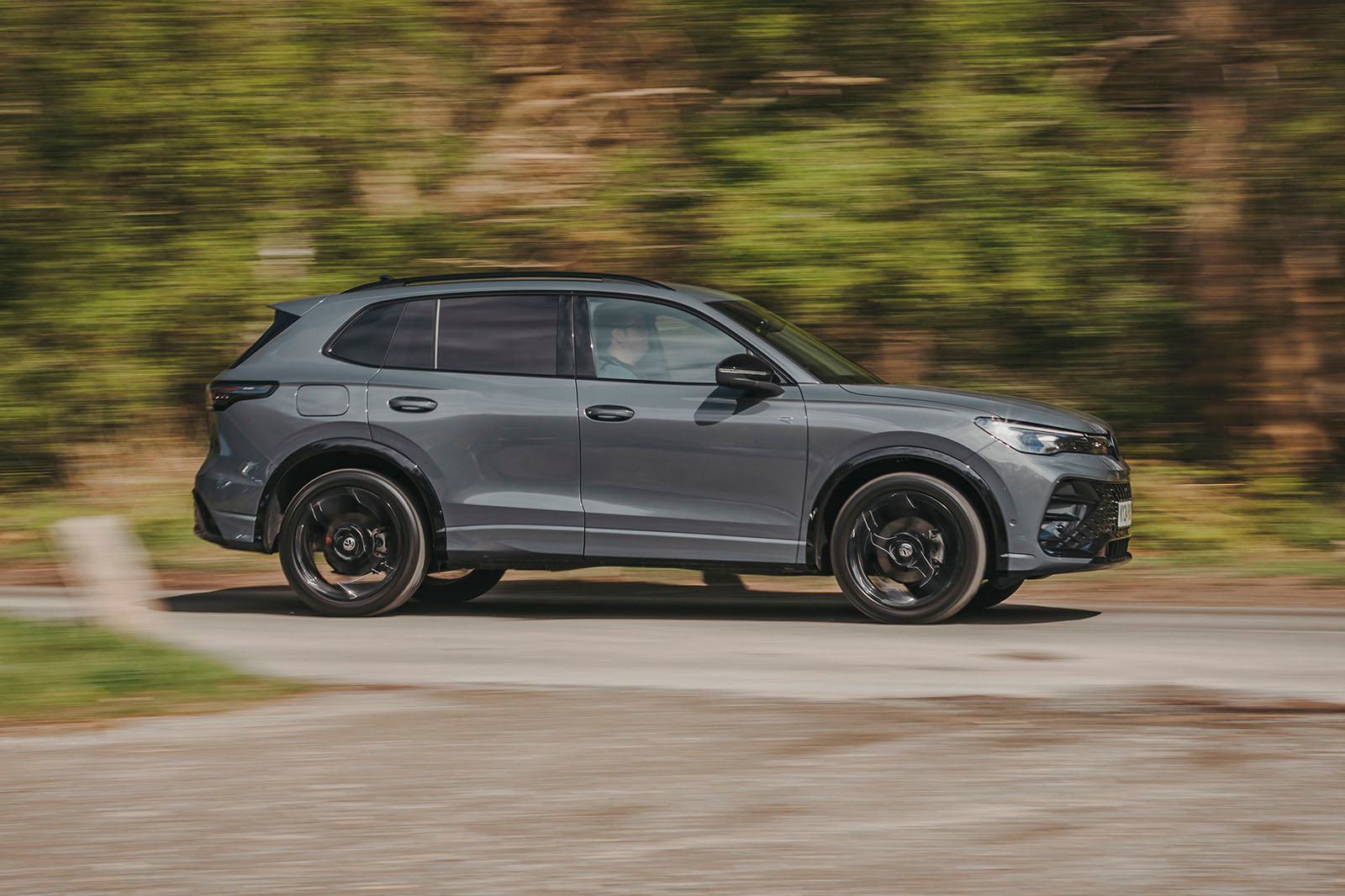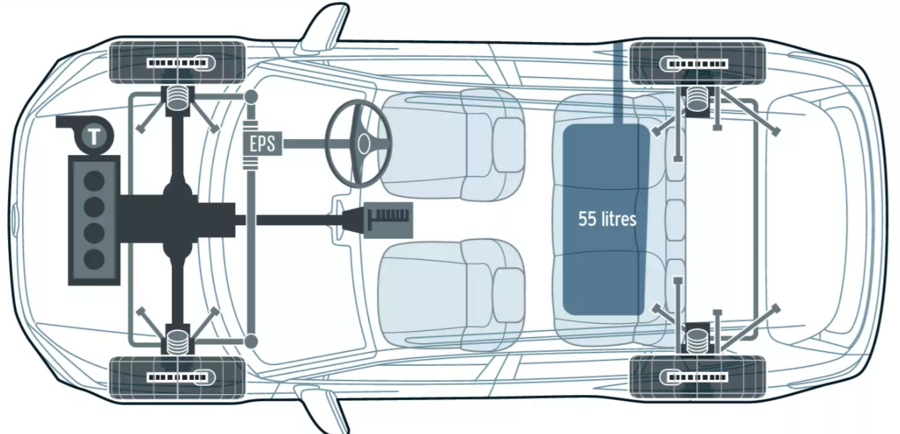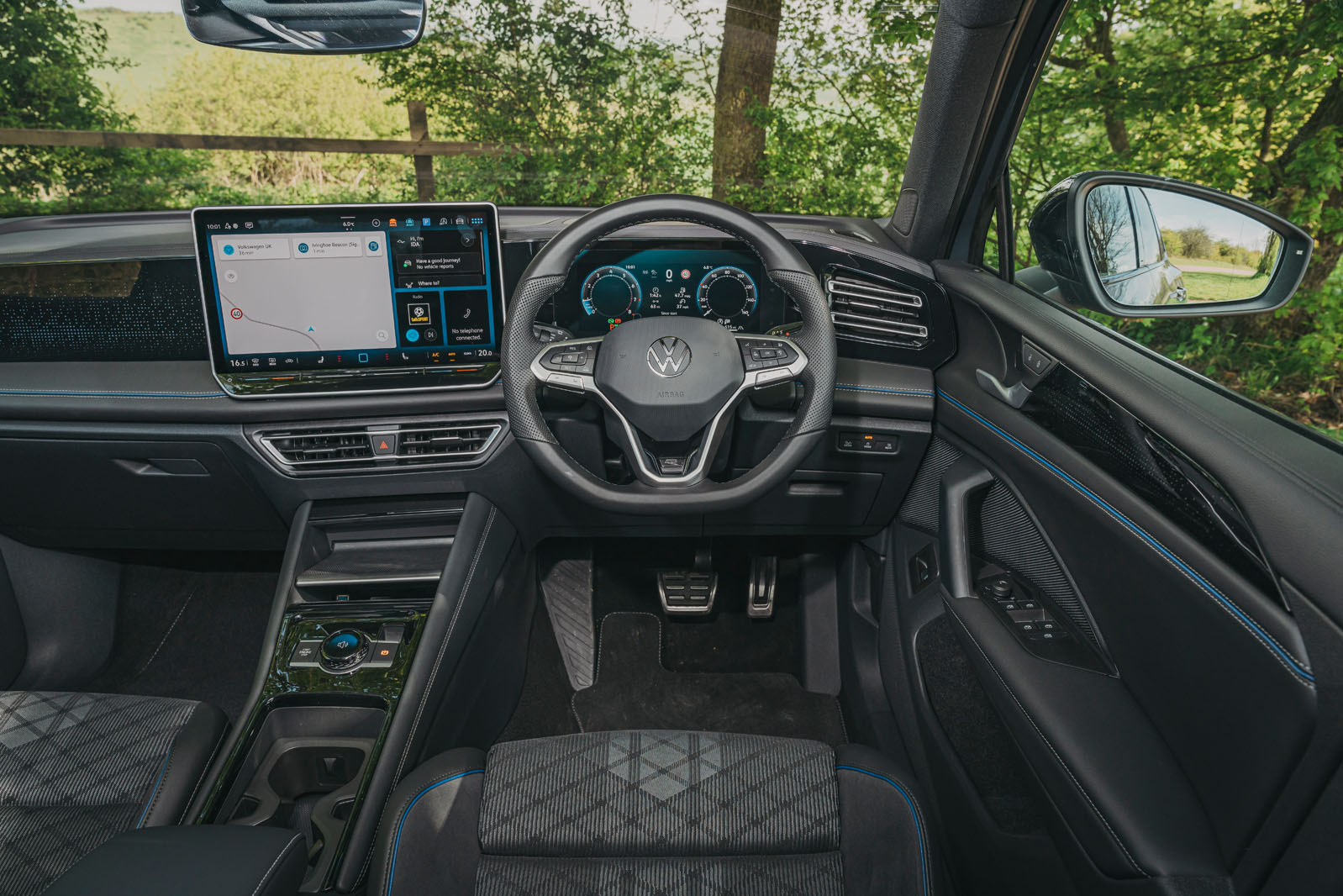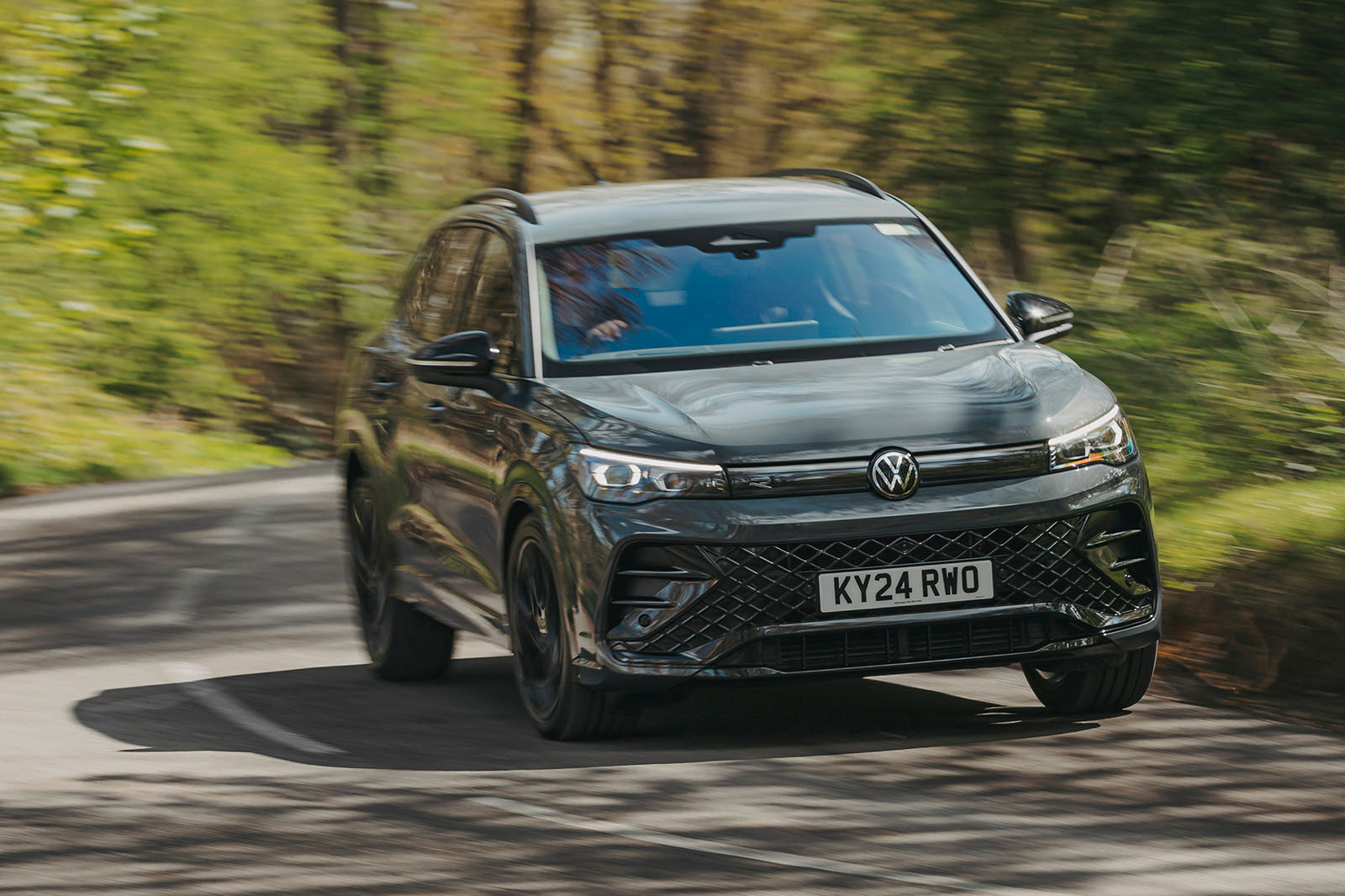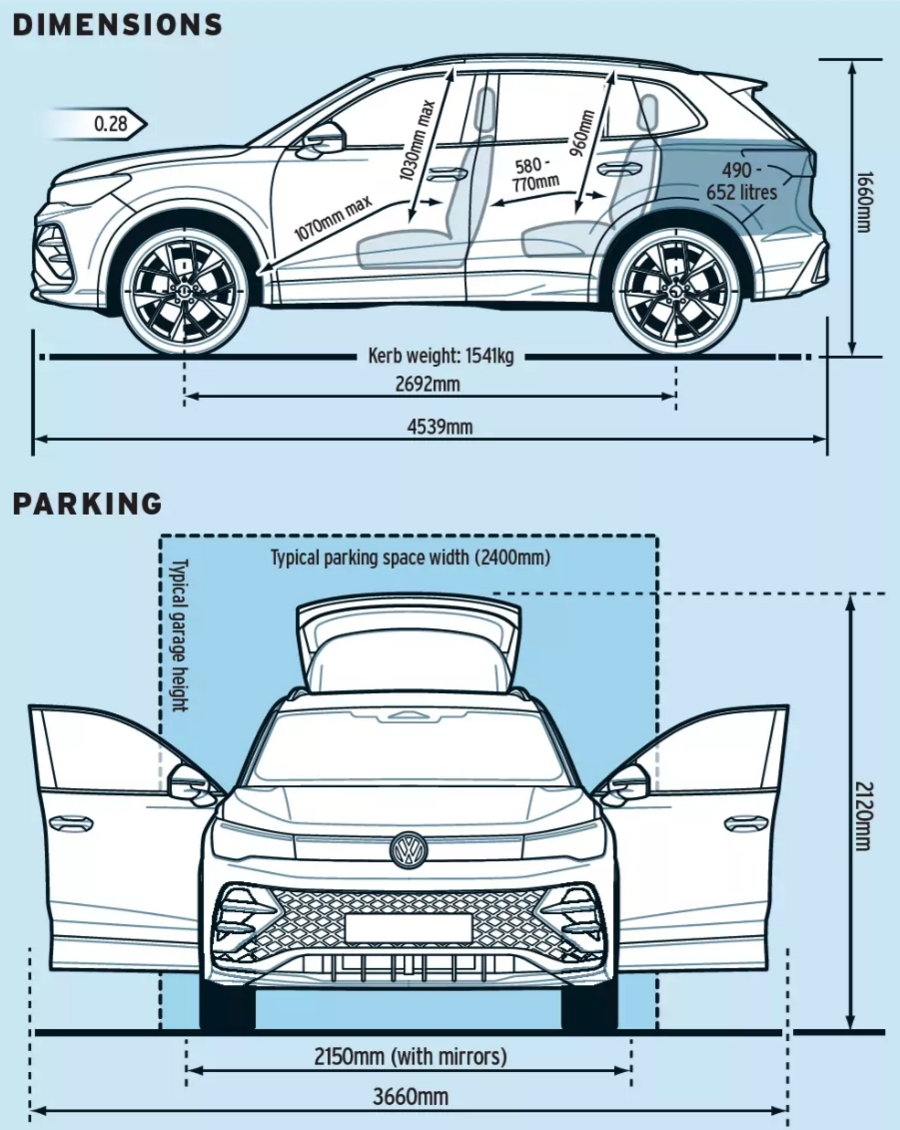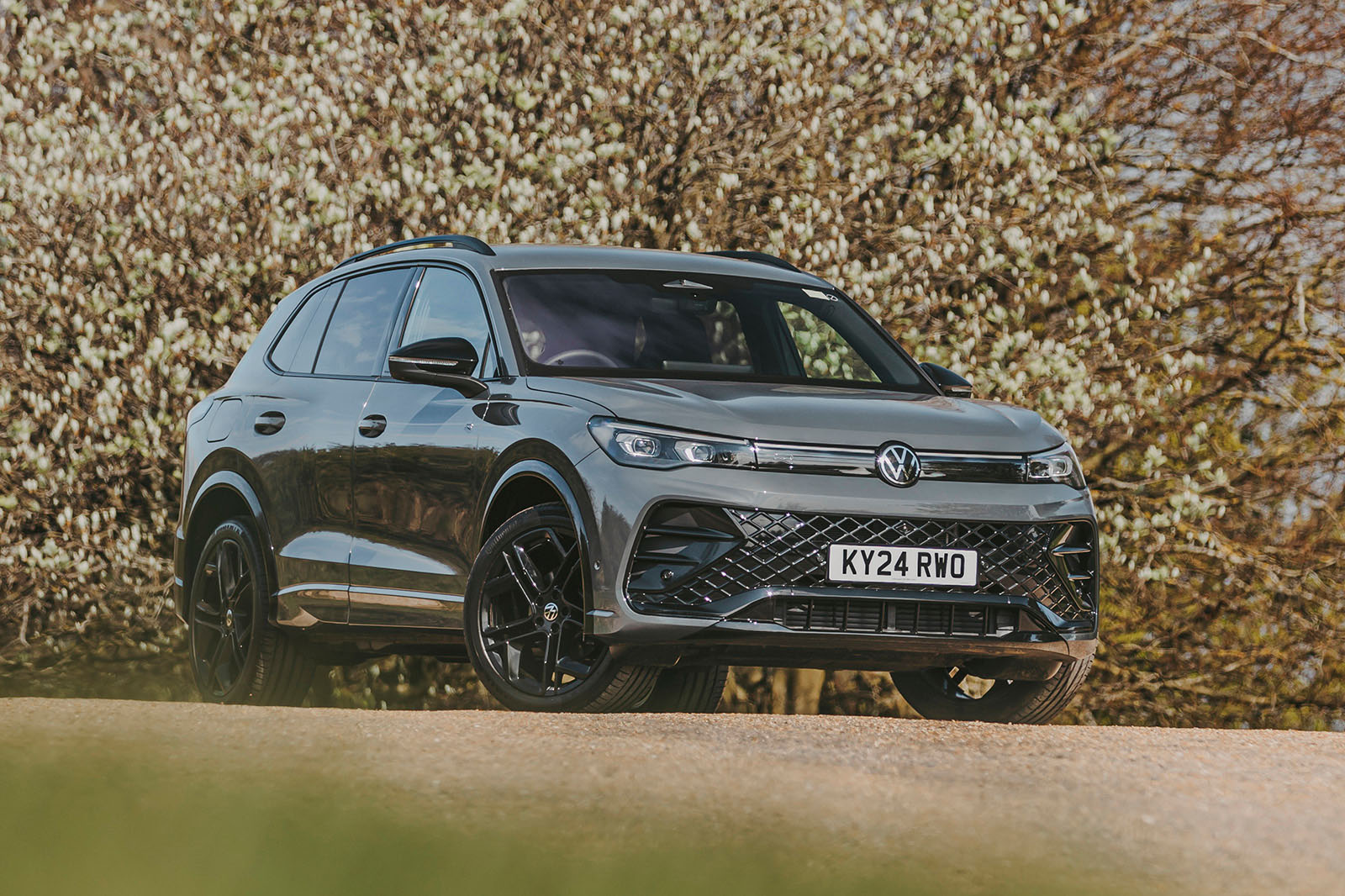VW’s claim to have added cabin quality to this car seems very much to be defined in a predictably modern, digital sense. Because what makes it different from the outgoing Tiguan isn’t the solid, expensive look and feel of the mouldings and materials or the hefty feel of the switchgear.
For that kind of built-in perceived quality (for so long a VW strong suit), the car sets a decent standard but not an exceptional one. Its primary fixtures and secondary controls feel solid and secure, its storage cubbies are lined and some plusher finishes catch the eye. There's nothing especially lavish or noteworthy but just enough richness of feel to bear comparison with premium rivals.
Instead, and in a familiar-sounding theme, the money has clearly been spent on other things. Backlit decorative ambient lighting panels span the dashboard and doors, which have selectable colours depending on the car’s chosen 'cabin atmosphere’ (Minimal, Joy, Energetic, Lounge, etc).
Then, in our test cars' particular cases at least, a 15in landscape-oriented, free-standing infotainment touchscreen sits on top of the fascia and a large head-up display behind the 10.3in digital instrument screen.
Plainly, VW is feeling the need to compete with 'disruptor' brands and pack in as much digital technology as a modern buyer might want, at the risk of reduced functionality.
The centre console layout is a case in point. Without a manual gearstick to accommodate, VW has moved drive selection to the right-hand column stalk, freeing up storage space. But it has therefore had to consolidate the headlight, indicator and wiper controls onto the left-hand stalk, making the wipers especially only slightly but noticably less intuitive to use.
The heating and ventilation are primarily controlled via the touchscreen, and although there are alternative physical ‘slider’ controls you can use just under it (now backlit), conventional physical controls would be even easier to find at a glance.
These are the kind of details Wolfsburg used to unfailingly ace, but it continues to seem a little distracted by novel digital alternatives that don’t quite deliver the same easy usability.
Other traditional VW brand strengths are better represented by the Tiguan, however. Our car’s front seats were excellent (adjustable for cushion inclination and length, with well-positioned head restraints, good lumbar support, heaters and massagers).
Second-row passengers get their own USB-C charging ports, special seatback pockets to stow digital devices, sliding and reclining seats and maximum head room and leg room to narrowly beat the BMW X1 (itself a well-packaged car).
Boot space, meanwhile, is fairly generous, although not at class-leading levels. With the back seats slid forwards, a Tiguan TDI or eTSI offers up to about 650 litres of cargo space – although that drops to a little under 500 in the case of the eHybrid PHEVs, because you lose any under-floor storage space.
Multimedia system
The Tiguan gets the same enhanced and refined touchscreen infotainment system as the Passat, based on VW’s latest-generation (MIB4) software.
The central screen spans just under 13in on the diagonal as standard and 15in with VW’s infotainment package upgrade (as fitted), which also brings with it a useful head-up display.
VW has worked a lot on the configurability of the home screen and related accessibility of key functions compared with the previous-generation set-up – and it shows. The bigger system makes more space for easy-to-hit menu shortcuts around the margins of the screen. You can choose for yourself which parts of the system they take you to, so usability is much improved.
We would still prefer a physical cursor controller for a system like this, as well as proper separate physical controls for heating and ventilation. (VW’s slider panels are still fiddly and a little unhelpful.) But for a system that can only be controlled at arm’s length, this is now one of the better ones on the market.
